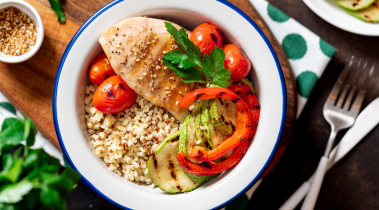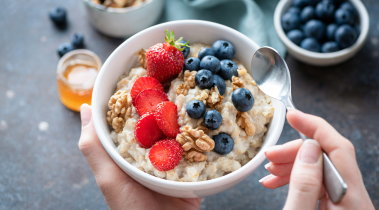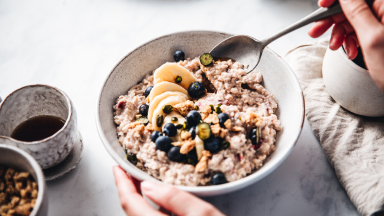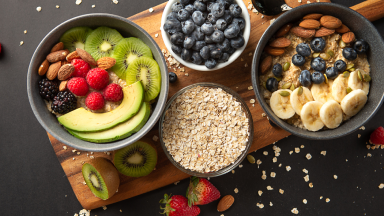High cholesterol typically has no noticeable symptoms on its own, so it is crucial to have regular check-ups and blood tests to assess cholesterol levels. Various factors can contribute to high cholesterol, including diet, lack of physical activity, obesity, smoking, and genetic predisposition.
However, American lifestyles have also led to hyperlipidemia (high cholesterol) in younger people. Pediatricians are now asking for routine cholesterol screenings as young as nine. Young adults are more at risk than ever before, so it’s essential to know basic facts about the condition in case it hits home for you.
What is High Cholesterol?
Cholesterol is a waxy substance in a person’s blood. While cholesterol is necessary for your body to build cells, an excess can lead to deposits sticking to the walls of blood vessels and eventually clog up blood flow. With too much build-up, a person becomes at risk for heart disease.
If you’re concerned about cholesterol, your doctor can order a blood screening (usually fasting overnight) and receive a reading from the lab almost immediately. A total cholesterol level of 200 mg/dL or greater is considered high.


How Can I Lower My Cholesterol in 30 Days?
While high cholesterol is mainly related to food choices, a complete lifestyle change is needed to combat the condition quickly. Studies have shown that increased physical activity and heart rate-elevating exercise strongly correlate to lowering LDL cholesterol (one of the aspects of a complete cholesterol measurement). Cardiovascular training is vital to get your blood pumping through your blood vessels, but strength training is essential, too, so your muscles are strong enough to support your activity.
In just 30 days, you can positively impact
your cholesterol levels by:
One food item you may be surprised to find that people with high cholesterol can still eat is eggs. While egg yolks contain mainly cholesterol, egg whites have no cholesterol. Most foods you should avoid if you have high cholesterol fall into four groups:

Choosing heart-healthy foods like lean meats, whole grains, and fresh fruits.

Increasing fiber intake for better digestion and lower cholesterol.

Staying active with at least 60 minutes of exercise daily.

Limiting sugary drinks and snacks, opting for water and nutritious options.

Cooking meals at home to control ingredients and portions.

Sharing your goals with loved ones for support.
What is the Best Diet for Someone with High Cholesterol?
When managing your cholesterol levels, focusing on sustainable meal plans is crucial rather than falling for short-lived fad diets. Remember, you’re not just looking for a quick fix but a long-term lifestyle change that will keep your heart and mental health happy.
If you don’t find a diet you believe is sustainable for you and your lifestyle, speak with a dietician about nutrition changes and substitutions you can make.

Mediterranean Diet
Enjoy fruits, vegetables, whole grains, nuts, seeds, and healthy fats like olive oil. Limit red meat and opt for fish and poultry.
Therapeutic Lifestyle Changes
TLC (Therapeutic Lifestyle Changes) Diet: Focus on fiber-rich foods, lean meats, and portion control to reduce saturated fat and cholesterol intake.
DASH
DASH (Dietary Approaches to Stop Hypertension) Diet: Prioritize fruits, vegetables, whole grains, lean proteins, and low-fat dairy.
Portfolio Diet
Portfolio Diet: Incorporate cholesterol-lowering foods like plant sterols, soy protein, almonds, oats, and legumes.
Vegan Diet
Vegan Diet: Explore a plant-based approach, excluding all animal products and embracing fruits, vegetables, whole grains, legumes, nuts, and seeds.
Flexitarian Diet
Flexitarian Diet: Emphasize plant-based foods while allowing moderate amounts of lean meats, poultry, fish, and dairy.
Foods to Avoid with High Cholesterol
When managing high cholesterol, making informed dietary choices is essential. By avoiding certain foods that can contribute to elevated cholesterol levels, you can take proactive steps towards better heart health. Keep the following in mind:
Saturated Fats
Saturated Fats: Reduce fatty meats, full-fat dairy, and tropical oils.
Processed Meats
Processed Meats: Minimize sausages, bacon, and deli meats with high sodium content.
Full-Fat Dairy
Full-Fat Dairy: Choose low-fat or fat-free options for healthier saturated fat levels.
Sugary Beverages
Sugar-Sweetened Beverages: Say no to sodas, sweetened juices, and sugary teas.
Highly Processed Foods
Highly Processed Foods: Reduce intake of packaged snacks, fast food, and ready-to-eat meals, often loaded with unhealthy fats, sugars, and sodium.
Red Meat
For those managing conditions like hyperlipidemia, mindful consumption of red meat, which includes steak, ribs, and ground beef, is advised.
What Foods Should Someone with High Cholesterol Include?
You might be surprised that managing high cholesterol doesn’t imply eliminating all meat from your diet. Some lean meats like chicken and turkey, especially when consumed skinless, can contribute to a balanced diet and support healthy cholesterol levels.
A key player in reducing high cholesterol is soluble fiber. This nutrient can limit cholesterol absorption into your bloodstream, helping you maintain healthier levels.
Consider incorporating these beneficial foods into your diet to aid in lowering high cholesterol:

Oats & Oatmeal
Commercials touting cereals as heart-healthy aren’t just a gimmick. Oats are high in fiber, which is a fat-fighter.

Berries, Nuts, and Potatoes
Berries, nuts, and potatoes are other sources of insoluble fiber that help flush away cholesterol.

Foods with Soluble Fiber
These include kidney beans, Brussels sprouts, and fruits like apples and pears.

Fish
Certain fish are high in Omega-3 fatty acids, which are known to lower triglycerides (another component of a complete cholesterol count.)

Avocados
Although this favorite fruit (yes, it’s a fruit) is high in fat, it’s the good kind of fat that can lower cholesterol.

Olive Oil
Yes! Even some oils are heart-healthy. Consider substituting olive oil for butter or vegetable oil in your diet.
You can achieve a win-win situation where your well-being thrives and your taste buds remain delighted.
By making conscious choices to avoid, include, or limit what you eat, you can take charge of managing your high cholesterol levels while still savoring the foods that bring you joy. It’s an empowering and rewarding journey, allowing you to prioritize your health without sacrificing the pleasure of enjoying a satisfying and balanced diet.
